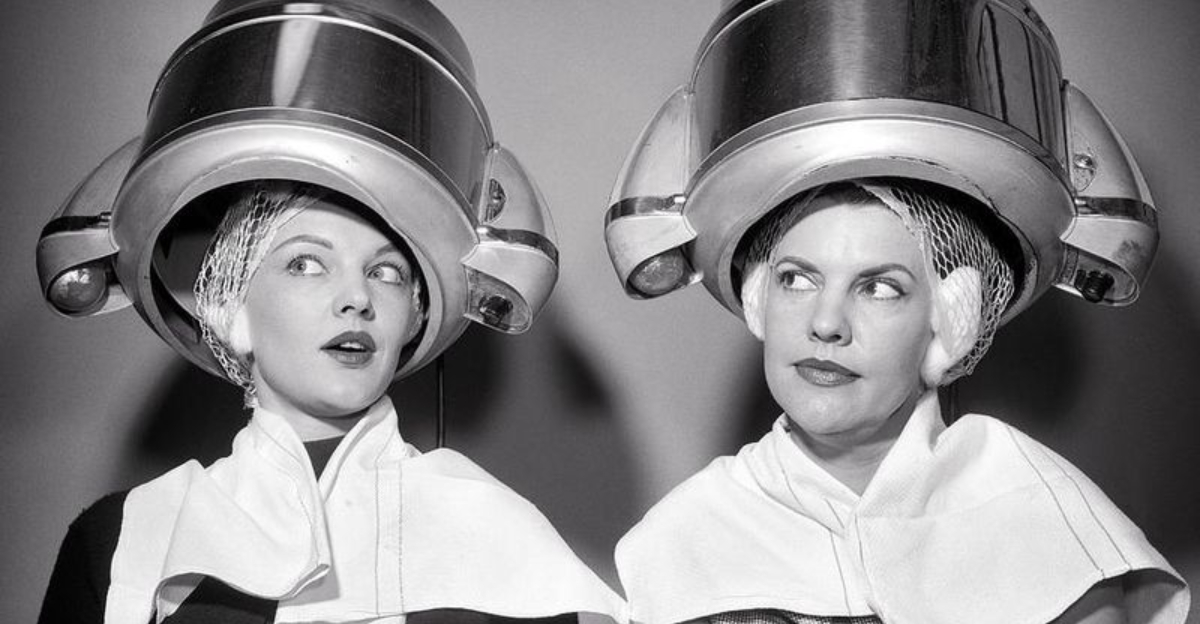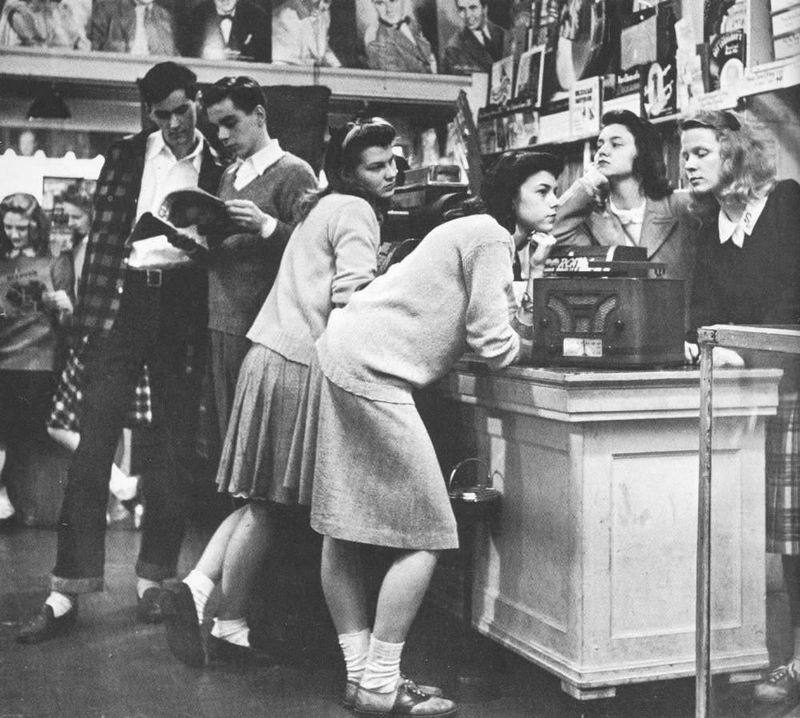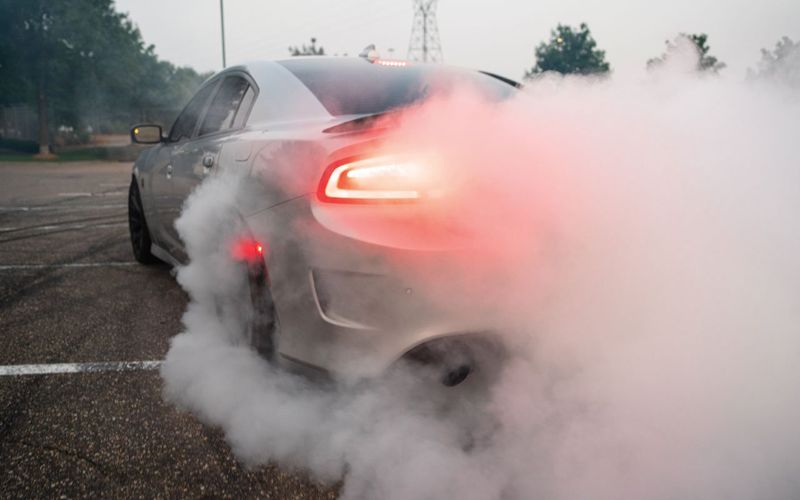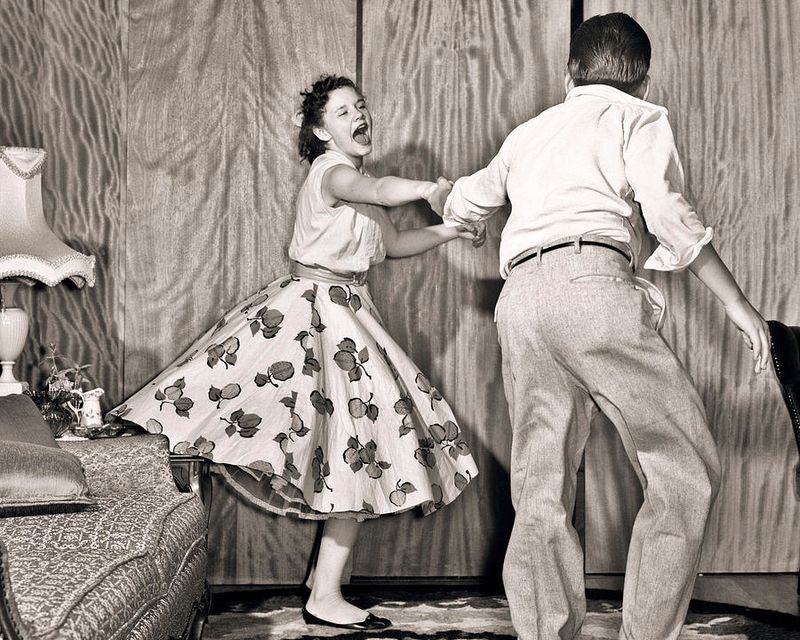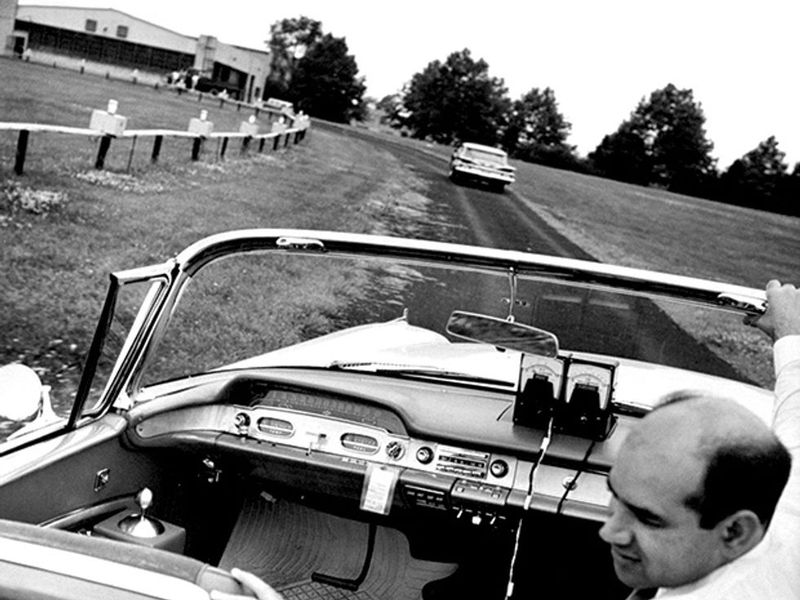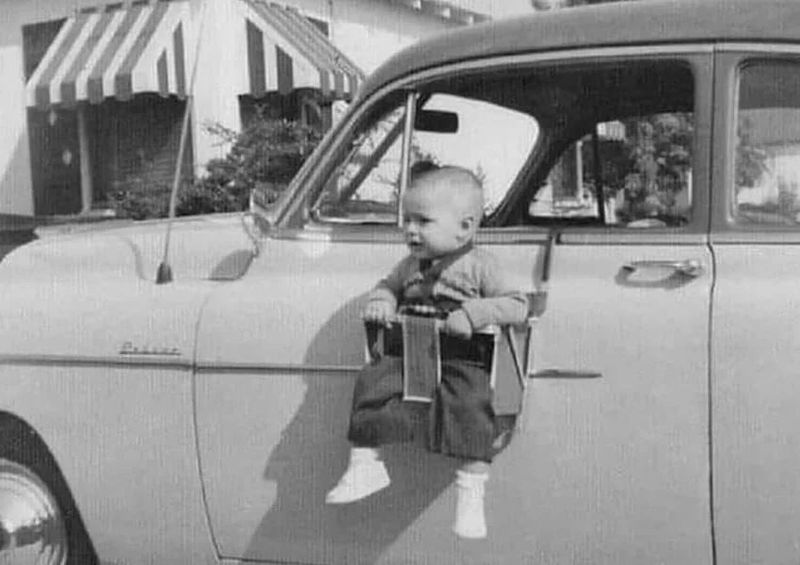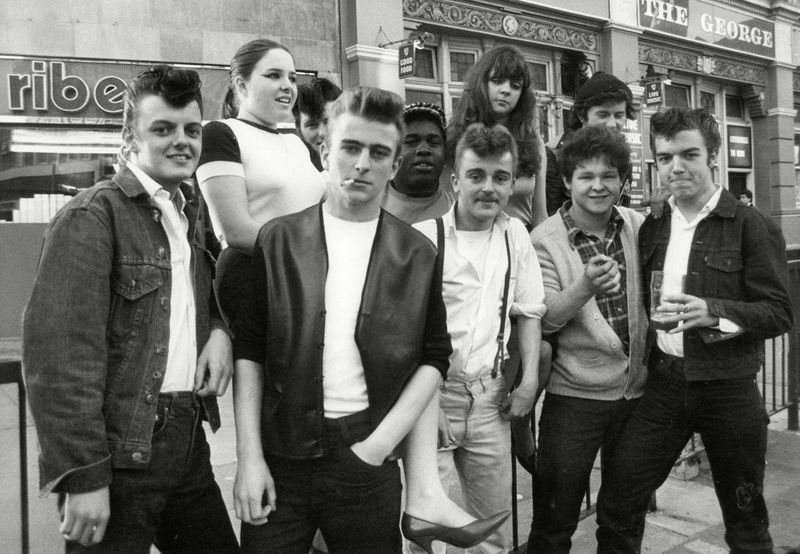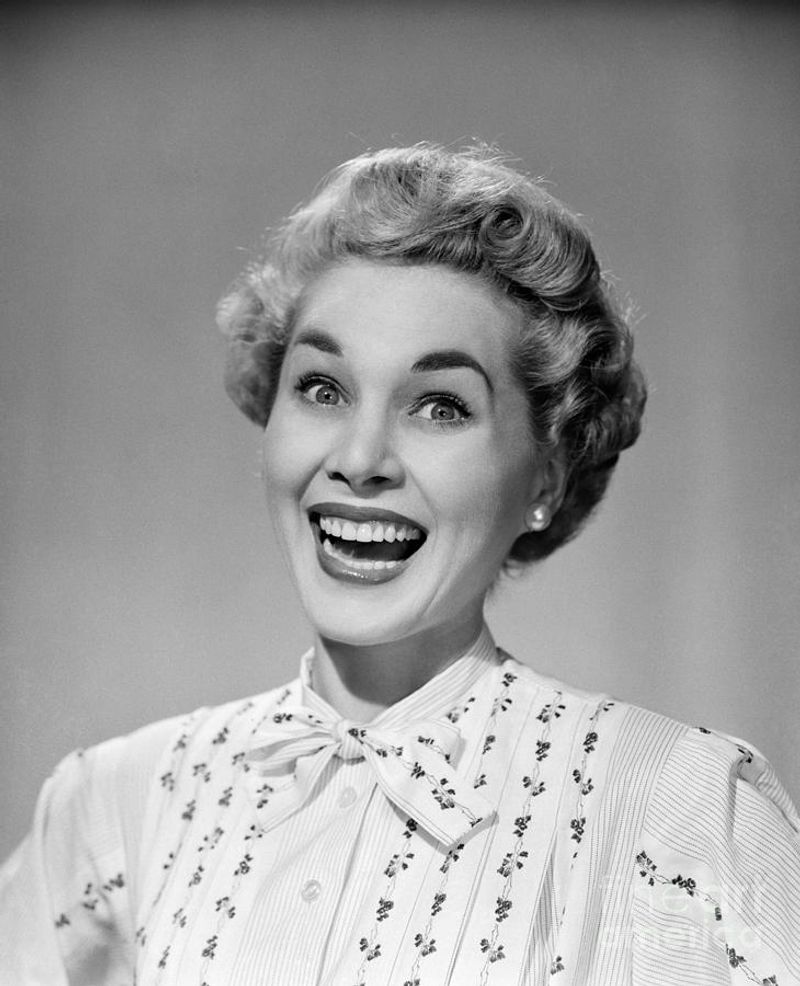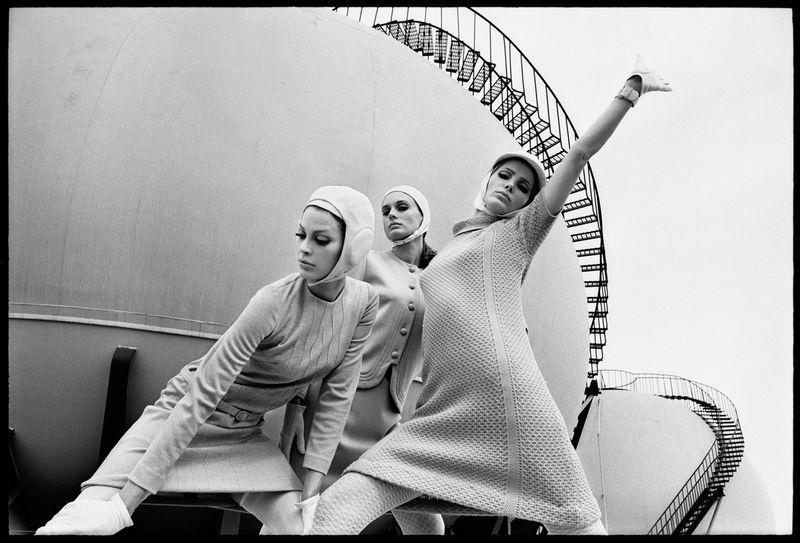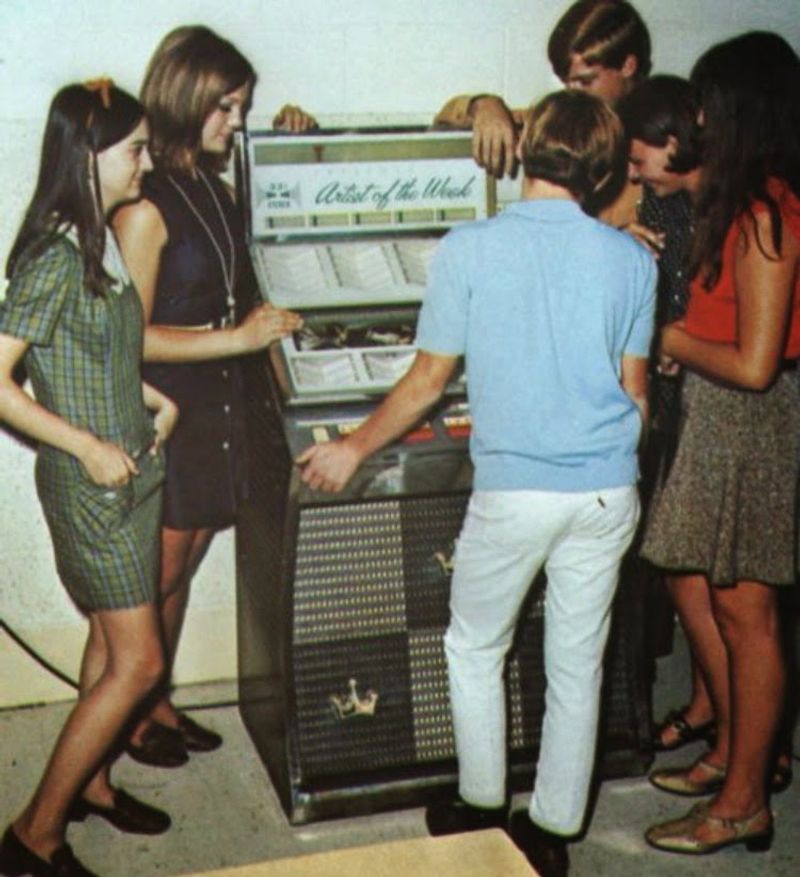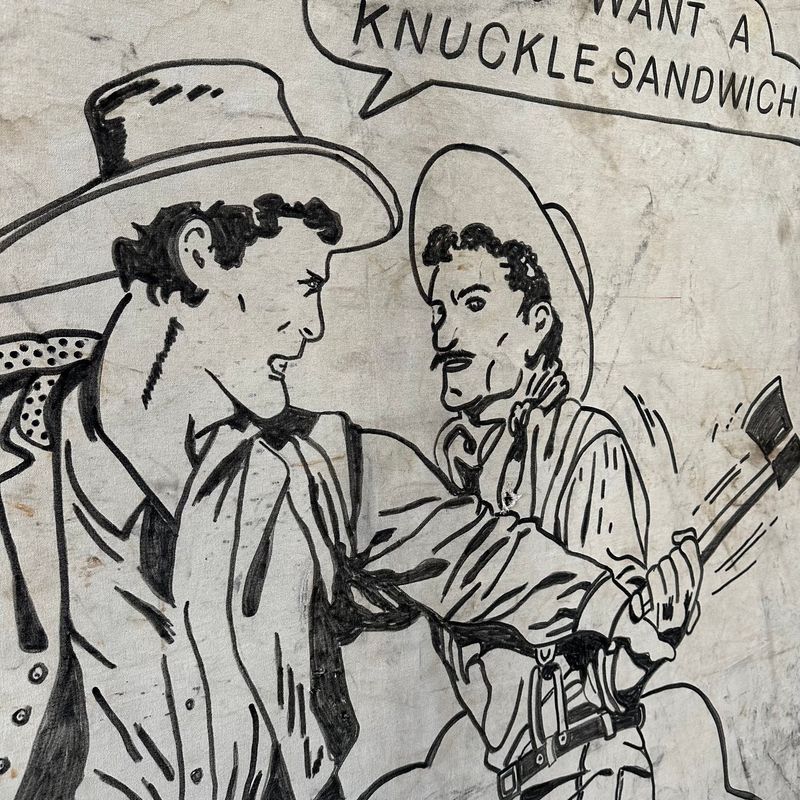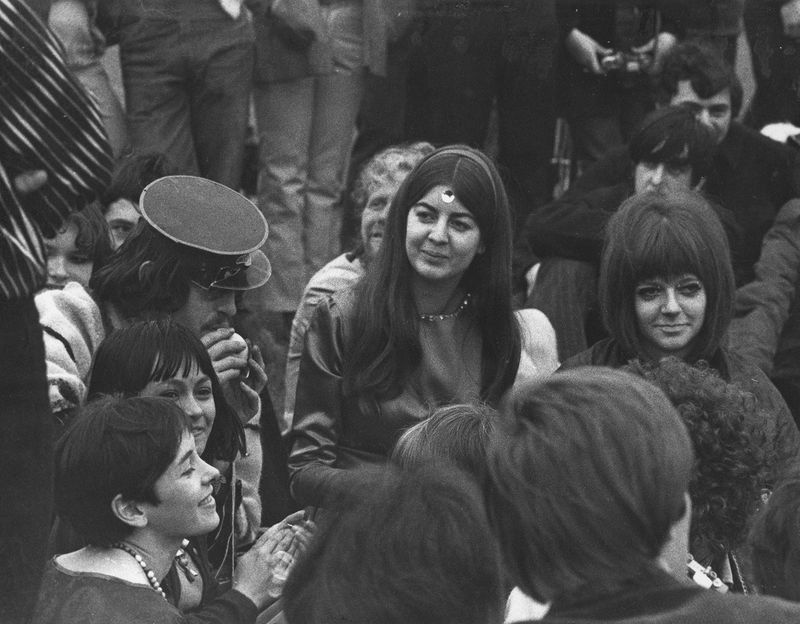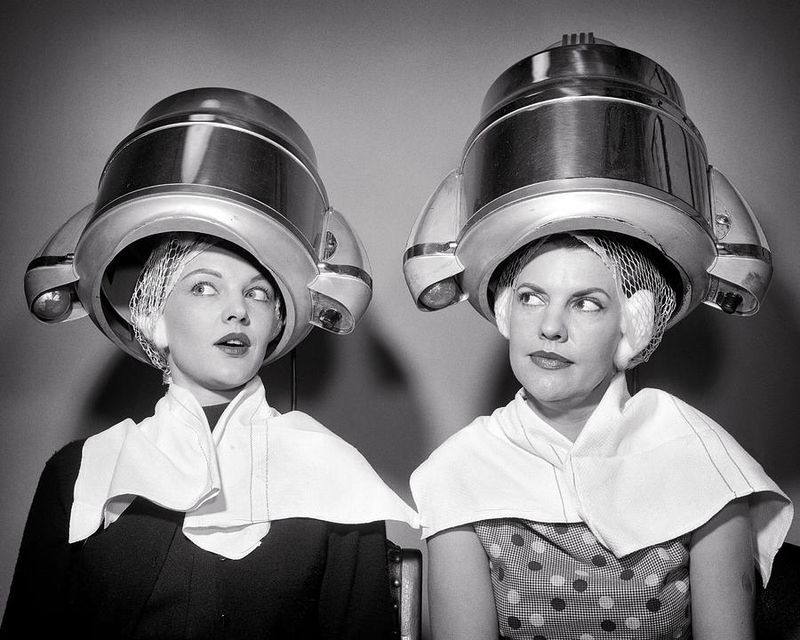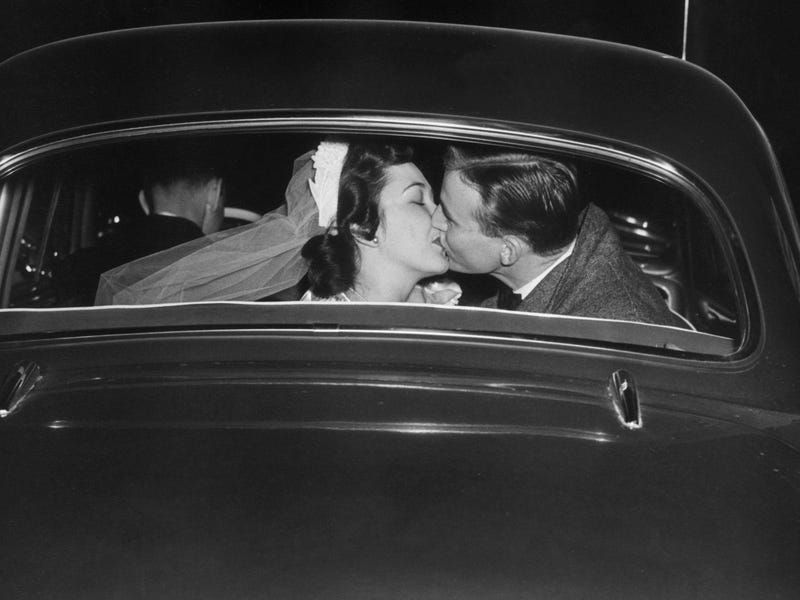The 1950s and 1960s were a golden era of slang—when everything was groovy, square, or made in the shade. These quirky expressions defined a generation but have since faded into retro obscurity. Here are 22 sayings from the ’50s and ’60s that are bound to make you chuckle, cringe, or say, “What in tarnation?”
1. Don’t flip your wig!
“Don’t flip your wig!” was the go-to phrase when someone needed to chill out. This saying was the perfect antidote—urging them to keep their cool and not lose their head. It was often accompanied by an eye roll or a playful pat on the back. The phrase humorously implied that one might literally lose their hairpiece in a fit of rage.
2. What’s your bag?
“What’s your bag?”—the ultimate inquiry into one’s personal vibe or problem. This question served as a gentle nudge to uncover the mystery behind their demeanor. It was a linguistic peek into someone’s emotional or psychological baggage, asking them to open up without judgment. The phrase encapsulated the era’s curiosity and empathy, making it a staple in conversations among the youth.
3. He’s a real cube.
In a world where being ‘hip’ was the ultimate goal, “He’s a real cube” was not exactly a compliment. This saying called out those who were out of touch with the trends and excitement of the time. It painted a vivid picture of someone stuck in their ways, unable to embrace the free-spirited essence of the era.
4. Made in the shade
“Made in the shade” epitomized the carefree lifestyle many aspired to. This saying captured the essence of having everything perfectly aligned in life, without any effort or stress. It was a statement of contentment and ease, suggesting that the speaker had somehow hit the jackpot of tranquility. Its use painted a vivid picture of effortless bliss.
5. Burn rubber!
“Burn rubber!” was the rallying cry for every thrill-seeker with a need for speed. This saying embodied the rebellious spirit of the era, where fast cars symbolized freedom and exhilaration. It was more than just a call to drive fast; it encapsulated a mindset—one of breaking free from constraints and embracing the wild side of life.
6. A real gone cat
Being “a real gone cat” was the ultimate badge of coolness, especially for jazz aficionados. This phrase celebrated those who danced to their own beat, unburdened by societal norms. It was a term of admiration for those who dared to be different, embodying the improvisational spirit of jazz. To be “gone” was to be so absorbed in the moment, nothing else mattered.
7. Cruisin’ for a bruisin’
“Cruisin’ for a bruisin’” was the playful warning to those toeing the line of trouble. It was a humorous heads-up that they were on thin ice, poised for a playful reprimand—or worse. This phrase captured the balance of carefree antics and the ever-present reminder of consequences, wrapped in a conversational wink. It was the verbal equivalent of a charmingly raised eyebrow.
8. Ankle-biter
The term “ankle-biter” brought humor to the often chaotic presence of small children. This expression captured the dual nature of young kids—adorable yet relentless in their energy. It was a lighthearted way to describe the lovable chaos that youngsters bring, a reminder of the innocence and mischief of childhood, wrapped in affectionate exasperation.
9. Daddy-o
“Daddy-o” was the quintessential term of endearment and camaraderie among the hip crowd. This phrase was tossed around like a verbal high-five, celebrating the unique bond of those who embraced the counterculture. It was a nod to shared ideals and a collective rebellion against the mainstream, encapsulating the spirit of brotherhood and effortless cool.
10. Don’t have a cow!
“Don’t have a cow!”—the perfect phrase to diffuse unnecessary drama. This saying was the gentle nudge to chill out and not blow things out of proportion. It humorously suggested that the person was overreacting to the point of absurdity. The phrase captured the essence of familial banter and the light-hearted way people communicated to restore calm in a storm of emotions.
11. Keen
In the ’50s, if something was “keen,” it was the epitome of awesome. This word expressed the peak of admiration and approval. To call something “keen” was to give it the highest praise, reserved for only the coolest or most impressive things. It was a verbal high-five, reflecting the era’s enthusiasm and zest for life’s simple pleasures.
12. Go ape
When the moment called for wild enthusiasm or rage, one would “go ape.” This phrase captured the essence of letting loose, whether in ecstatic joy or boiling frustration. It was a descriptor of intense emotional release, where all inhibitions were cast aside. Whether over a new album or a sibling’s antics, going “ape” was the ultimate expression of unfiltered emotion.
13. Peachy keen, jelly bean!
“Peachy keen, jelly bean!”—a rhyming burst of positivity. This phrase was the verbal equivalent of a sunny smile, expressing that all was well and wonderful. It was a whimsical way of conveying contentment, often used by those whose outlook was perpetually bright. This saying was a reminder of the era’s optimism, a verbal sunshine on cloudy days.
14. Threads
“Threads”—the ultimate nod to fashion and style. In an era where self-expression was key, this term was the perfect way to compliment someone’s sartorial choices. It was a recognition of their style prowess and flair. Describing clothes as “threads” added a layer of cool to the conversation, highlighting the importance of personal style in defining one’s identity.
15. Wet rag
Nobody wanted to be the “wet rag” at a swinging party. This phrase was a humorous yet slightly disdainful way to describe someone who dampened the mood with their lack of enthusiasm. It was a gentle push for them to engage and enjoy the festivities. Being labeled a “wet rag” was a social nudge, a reminder to embrace the joy and camaraderie of the moment.
16. Lay it on me
“Lay it on me”—the invitation to speak candidly and openly. This phrase was an open door to honesty, encouraging heartfelt conversations. It reflected the era’s emphasis on genuine connections and meaningful dialogue. Invoking this saying was a way to assure someone that their thoughts were valued, fostering a bond of trust and understanding.
17. Monkey suit
Wearing a “monkey suit” was a necessary evil for formal occasions. This phrase was the playful jab at the rigid formality of wearing a tux. It captured the sentiment of those who felt out of place in such attire, longing for their usual casual wear. It was a reflection of the era’s rebellious undertones, where even formalwear was met with a cheeky resistance.
18. Givin’ me the heebie-jeebies
“Givin’ me the heebie-jeebies”—the perfect way to describe an unsettling sensation. This phrase captured the spooky unease that seemed to linger in certain places or situations. It was a colorful way to express the feeling of being creeped out, bringing a sense of humor to the otherwise spine-chilling experiences. The expression was as much about acknowledging fear as it was about dispelling it with a chuckle.
19. Knuckle sandwich
Offering someone a “knuckle sandwich” was the lighthearted way to threaten a friendly punch. This phrase was the embodiment of playful banter, where threats were never serious but wrapped in camaraderie. It was a nod to the toughness associated with the era, yet softened by humor. The saying turned potential conflict into a shared joke, reinforcing bonds rather than breaking them.
20. Split
“Split” was the succinct way to signal a quick exit. This phrase was a testament to the transient nature of social gatherings and the desire for freedom of movement. It captured the spirit of those who thrived on spontaneity, never tied down to one place for too long. “Split” was the call to move on, always seeking the next adventure.
21. Word from the bird
“Word from the bird” was the feathered assurance of truth. It was the playful stamp of authenticity in the world of hearsay and whispers, bringing a bit of flair to everyday truths. This expression added a quirky credibility to stories, ensuring the listener believed every word.
22. Back seat bingo
“Back seat bingo” was the cheeky nod to teenage romance at the drive-in. This phrase captured the essence of youthful love, where privacy was found behind the steering wheel. It was a playful acknowledgment of the flirtations and affections that bloomed in those twilight hours. The saying painted a picture of innocence and discovery, bathed in the glow of the silver screen.
